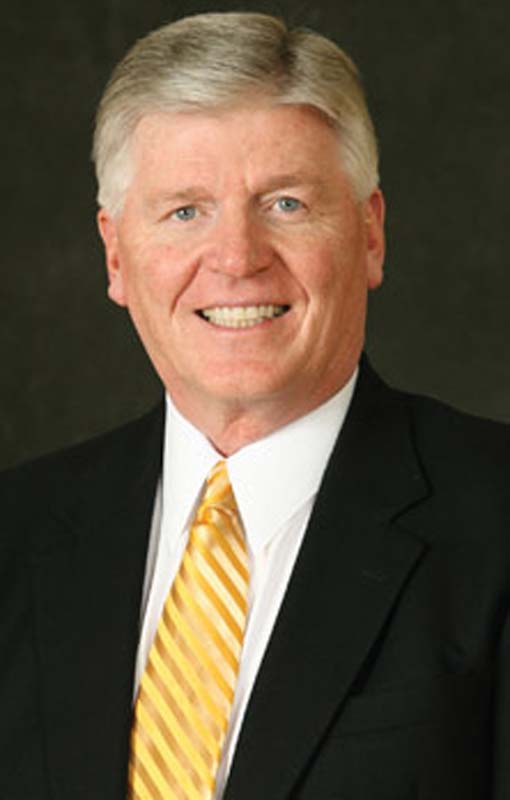04.14.11
Great Gear, but for Whom?

Tom O’Connor, the director of athletics at George Mason University, spoke in a press conference Thursday on campus. O’Connor is in his 16th year at GMU, and has over four decades of experience with other programs as well, including Dartmouth.
He provided many answers and opinions on the basketball team and with the department in general, but his experience and involvement showed its fringe when asked about certain equipment present in the gyms on campus. “I know some of the specialized equipment we have is for our athletes,” O’Connor said, “but I don’t definitively about all the equipment.”
These specialized pieces, normally seen at a power lifting gym or strongman facility, are both very expensive and hard to come by. The GHR, for example, ranges in price usually from $800 to over $2,000. Then there’s the reverse-hyper, which you’ll have to drop over $3,000 for. Bumper plates, which are weights designed for heavy impact lifting (deadlifting, clean and jerks, etc.) are a very expensive commodity as well.
It seems rather strange, then, that you can find two GHR’s at the RAC, two at the AFC, one at the Skyline, and several at the Field House. Student athletes generally work in the Field House, so why spend all the extra money putting this stuff – that most people don’t even know how to use – in each of the gyms?

The GHR, a.k.a. 'the leg killer.'
The bumper plates and reverse-hyper can be found in the RAC, which is also unusual. Bumper plates normally cost four to five dollars a pound (though the link here shows the cheapest ones you can find, which are still $22 for a 5lb plate)(, compared to $.50-.75 for regular plates. In a gym that mainly boasts light motion machines, where do these bumper plates fit in? The reverse-hyper machine is the most difficult piece of equipment to work with. It focuses on stretching your spine, so someone who isn’t familiar with it has a good chance of using it incorrectly (not good). For those who do know how to use it, it’s a saving grace. But, is it really useful for athletes – especially at the RAC?

The reverse-hyper.
Recently, a group of students, who do power lifting at the Field House, were upset when some of the specialized equipment was moved to the RAC when it was opened last year. The equipment was certainly not purchased to cater to these students, since there isn’t any funding or support of power lifting at GMU. With such a considerable amount of money used on this stuff, its unlikely any of it was purchased by the school without purpose.
It’s great that this stuff is here, and available for anyone to use, but the question remains: why?